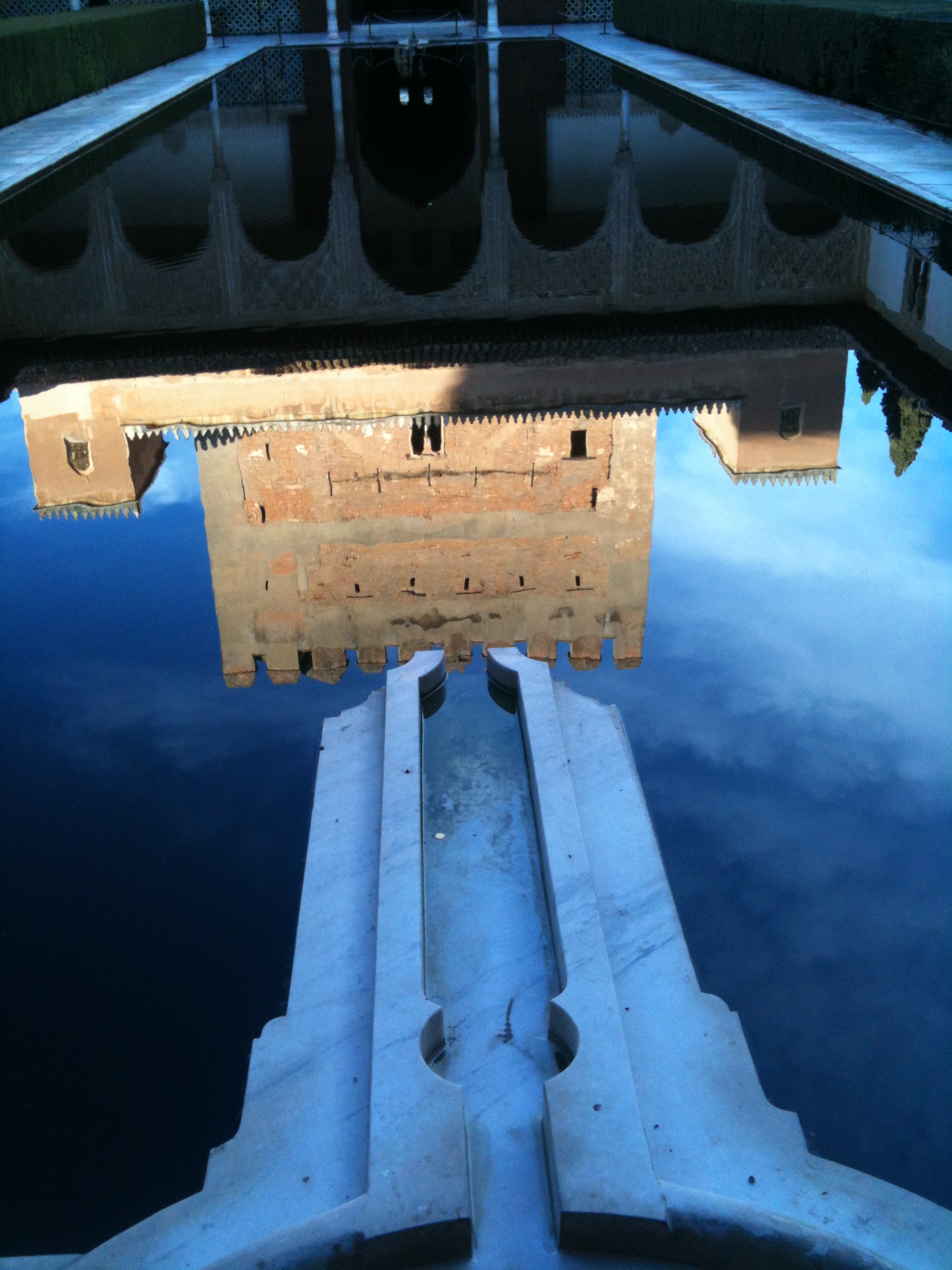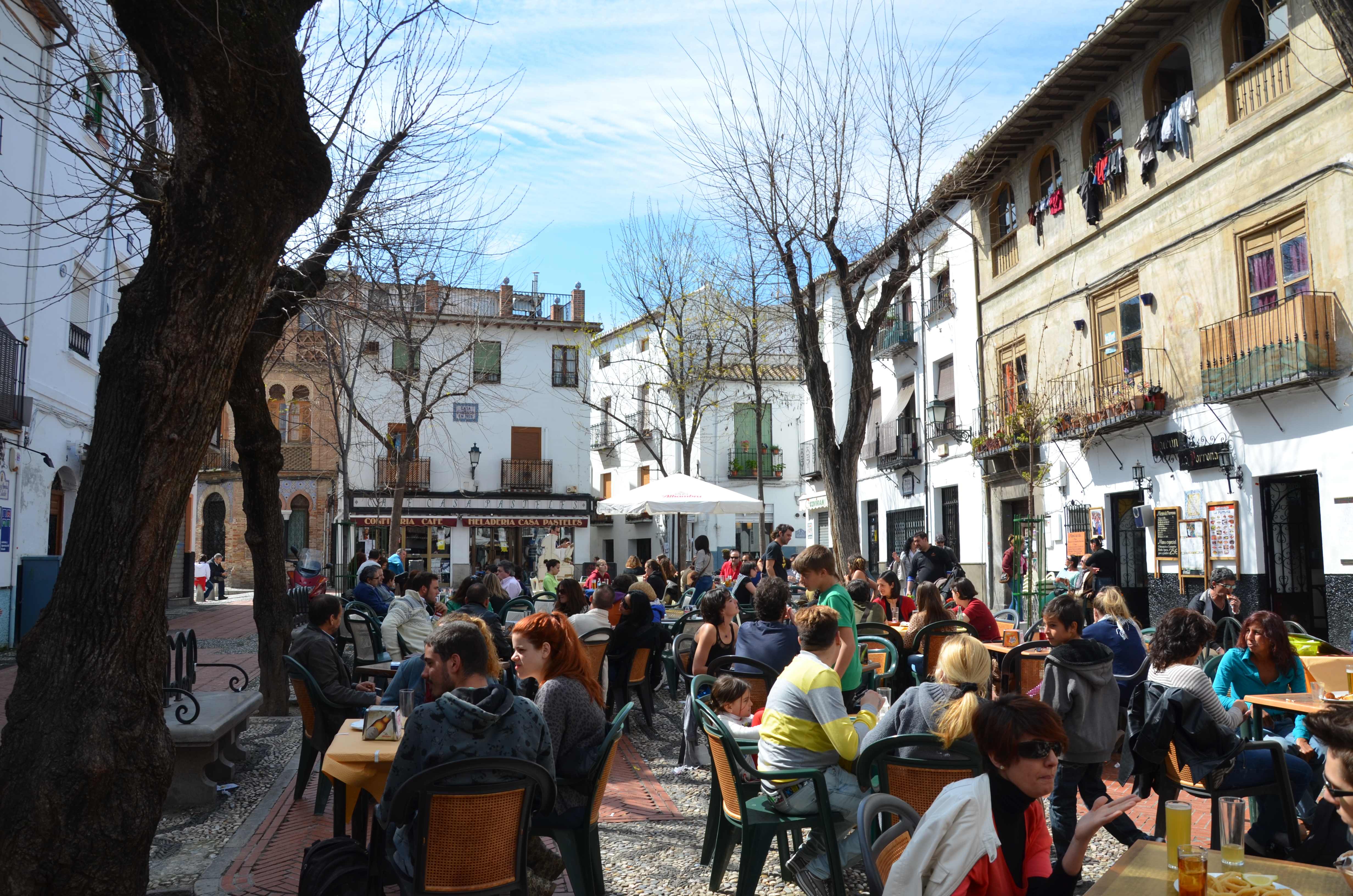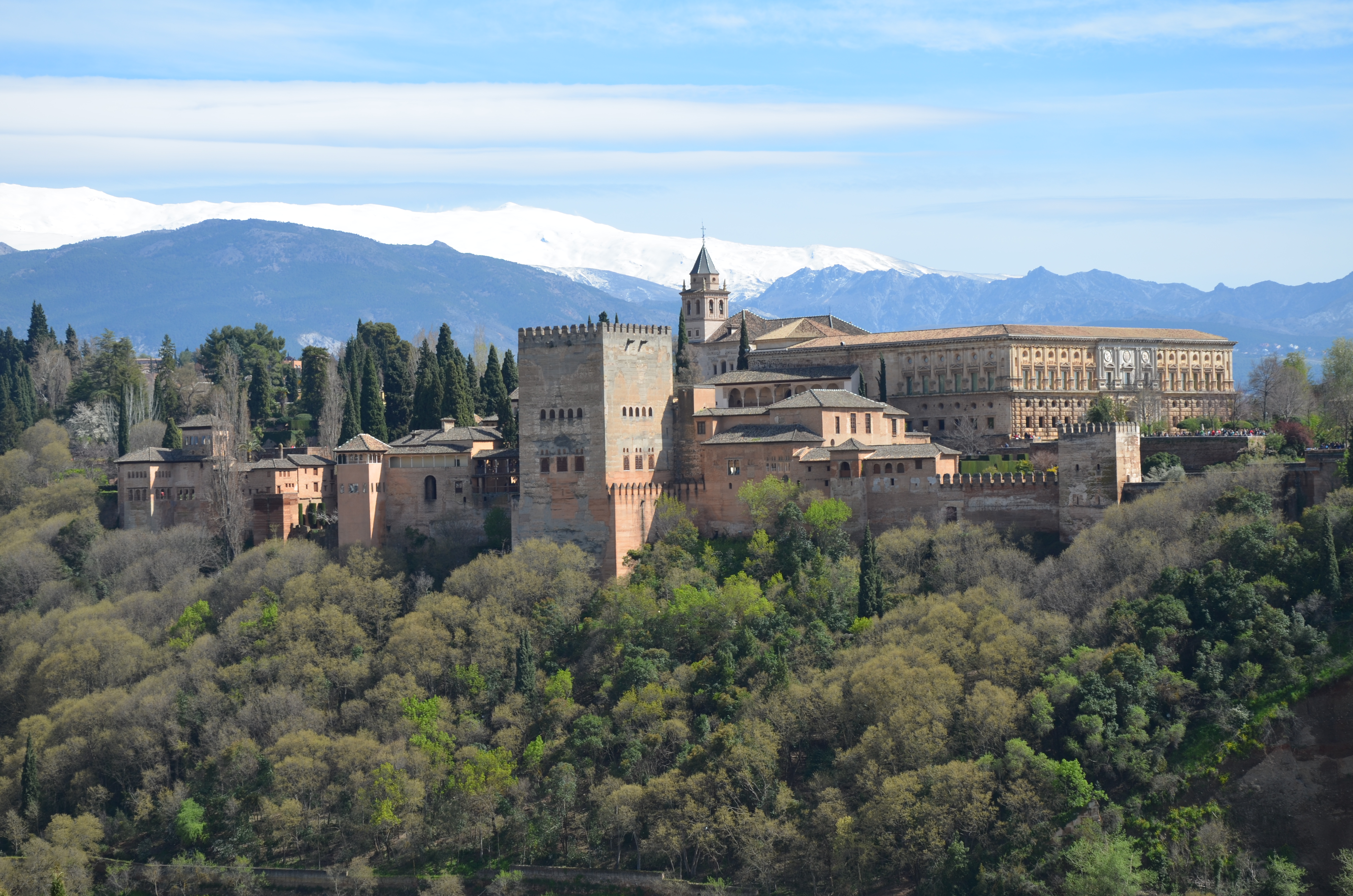
I wrote this journal entry somewhat with a feeling of wistfulness, as I prepared to leave Granada, the city that has served as a temporary home for my family and me during the past nine months. Coming to the University of Granada to work with the Cognitive Ergonomics Group has been a great experience both from the professional and personal perspectives. From a researcher’s perspectives, I take away with me three learnings: flexibility in facing uncertainty, flexibility in facing hurdles, and flexibility in facing surprises.
I arrived in Granada the last week of August last year, filled with excitement and plans for my work. As expected, many issues had to be taken care of prior to starting work in a new city and culture. And of course the list of things to do is usually longer when when one travels with a family. I write this blog with researchers traveling with his or her children specifically in mind. Much of the issues I discuss however are relevant to the single researcher.
I did my best to finish the logistical matters before I left Helsinki, but I was not very successful. Hence as planned, I arrived one week ahead of my family (i.e. spouse and two small children) to take care of logistical and bureaucratic issues: finding a suitable flat, daycare services for children, banking services, required registrations with the immigration authorities, as well as meeting my host/supervisor and colleagues. I have been forewarned by friends and colleagues, both in and outside Finland, to be ready for cultural differences when I move to Spain. I have bumped into these differences, but I will limit my discussion to some inter-related idiosyncrasies in the process of establishing a life in Granada.
Setting up household
With regards to renting a flat: plan on spending up to the same amount as the monthly rent for the utility expenses. By utility expenses, I mean electricity, water (in my apartment building, hot water is charged separately), heating, and garbage collection. Therefore before agreeing to rent a flat, one should clarify who pays for what, because these things are not necessarily mentioned in rental advertisements. For the single researcher, the process might be less complicated. Most of the exchange students whom I met, for example, managed to get their rooms in shared flats, during their week of arrival, by browsing through the various bulletin boards in their respective faculty building. And at the time of this writing, there was no shortage of rental flats or rooms in shared flats. The University of Granada also runs a website (in Spanish) of rental listings, if one wants to negotiate a rental agreement while still at home.
I consider internet connection at home as a utility. My supervisor and I regularly had videoconferences, and often home was the best place to do this since I did not have my own workspace at the university. Note however that at the time of this writing, the fastest residential internet access (ADSL) available in Granada is 30 MB at it is priced at about 40 euros per month. Even with price competitions among Spanish operators, telecommunications expenses in Spain is still higher than in Finland; hence budget accordingly.
From the Finnish perspective, winter conditions in Granada are mild, with temperatures dropping to minus two degrees. It is a paradox, however, that it is most difficult to keep warm indoors. It seems that insulation materials are either used sparingly (by Finnish standards) or not at all. Hence, even if one is fortunate enough to rent a flat in a building with central heating, the flat does not stay warm, and keeping the whole flat heated at 21-22 degrees ambient temperature is costly. So bring warm clothing.
Those allergic to mold should prepare for its general presence inside homes during the winter months. Condensation forms on walls, and mold can grow and spread rather quickly if left unchecked. It is difficult to regulate the ambient temperature to help prevent this from happening.
Dealing with bureaucracy
If one plans to stay longer than three months, one has to register with the immigration authorities. This rule applies to EU citizens as well. Once registered, one gets an identification number called the NIE (Número de Identidad de Extranjero). This number is relevant to the researcher because it is needed for such transactions as opening a bank account, registering at the health center, and opening an account for services that are billed monthly (e.g., utilities). In theory, the registration process should not take more than one day. However in order to spend the least time at the immigration office, one must be prepared. This means:
(1) all required documents (i.e., invitation letters from the university, proof of financing, health insurance coverage, marriage certificate, birth certificates of children, etc.) must be translated in Spanish. Note that one has to provide all the photo copies of the documents.
(2) one has to complete the registration before the nearby bank (BBVA) closes at 15.00. This is an important detail to attend to if one wants to finish the whole registration in one working day. The reason is one will get a bill that can be paid only at a bank. After getting the bank receipt, one then returns to the immigration office to pick up the NIE. Factor in the fact that most customer service counters of local banks process this type of transaction for only a limited time in the morning, one can easily spend lots of time shuttling from one queue to another.
With the NIE in hand, the next stop for registration could be one’s local health center. There, too, the key to a relatively smooth process is to have ready the photo copies of all the required documents, that is, passports, NIE, and EU health insurance cards (the one ordered from KELA). Just like in Finland, a specific general practitioner is assigned to you and your family members. At the time of this writing an administrative fee is billed only if one does not cancel an appointment with the doctor. Prescribed medicine is free-of-charge (but there are some signs that this might change).
Financial transactions
Overall, I found it most convenient and efficient to use the credit and debit cards issued by my Finnish bank to pay for most transactions (i.e., groceries, restaurants and various services), and since most automatic teller machines are set up to handle non-Spanish bank issued credit/debit cards, I was able to use my debit card to withdraw cash from my current account via the ATM. And of course nowadays, paying bills within the EU is more convenient providing one has access to online banking services. With regards to paying for rent, I have heard that some landlords still insist on cash payment each month. Given the current situation in the country, this might be a reasonable demand but might also be a hassle for the visiting researcher who uses non-local banking services.
Childcare and schools
Spanish children are expected to start pre-school at the age of three, and nursery, or daycare (guarderías), are available to children up to three years-old. When we moved to Granada we wanted our oldest son who was then three years-old to meet some ”Granadinos” (as the locals are known) his age. We did not have enough time to apply for a place for him in a public nursery school, therefore we opted for a private one. There are bilingual (Spanish-English) nursery and some private English language nursery are starting to offer its services. There is more emphasis on formal learning in the guarderías. In our case, we noticed that the children in our son’s guardería spent most of their time indoors sitting at their desks doing writing and reading exercises. This meant there was less time for free play either indoor or outdoor. We realized our son missed free play time, as he experienced it back home, during which he made his friendships. On the other hand, he learned to speak Spanish very quickly.
Transportation
One can walk comfortably to any of the university campus or buildings throughout the city. Unless I was in a hurry, I walked about three kilometers from my flat in the center to the Cartuja campus. The city buses are on par with the Helsinki buses, but cheaper, and the bus drivers are more service oriented. I mean they seem to gladly give information about which bus a confused customer should take. Neither did I ever observed them leaving a customer behind, that is, one who is is running for a bus as it is pulling away from the bus stop. I once ran for a bus that already pulled away from the bus stop, because missing it would mean I would be late for a meeting. The driver saw me, gestured with his hand that he’s is going ahead because the traffic light already turned green, but he stopped anyway and let me in. One can pay cash to the driver, but it is more economical to get an electronic bus card, which can be conveniently recharged at any kiosk.
The motor scooter seems to be the favorite mode of private transport. I have met some people who drive their cars daily to the city from the suburbs, and according to them traffic and parking are problematic. The Granada airport is half an hour drive from the city center, and one can also take the airport shuttle bus quite conveniently from the city center. The airport services flights to and from other Spanish cities. For direct flights to and from Helsinki, the nearest is the airport in Málaga about two hours away by bus, which leaves from the Granada bus station.
Using inter-city buses is the most inexpensive way to travel between cities. Within Andalucía, traveling by train, for example from Granada to Sevilla or Córdoba, is a good option. It is fast and comfortable.

Working conditions
I study the effect of cultural factors on usage of technology, with an eye towards applying the knowledge to the design of technology. Granada has been a good starting point for my comparative cultural research. It has a long history of a place where cultural groups met, battled, and melded. Writing in 1829, Irving Washington reported:
”The cities of Arabian Spain became the resort of Christian artisans, to instruct themselves in the useful arts. The universities of Toledo, Cordova, Seville, and Granada were sought by the pale student from other lands to acquaint himself with the sciences of the Arabs and the treasured lore of antiquity; the lovers of the gay science resorted to Cordova and Granada, to imbibe the poetry and music of the East; and the steel-clad warriors of the North hastened thither to accomplish themselves in the graceful exercises and courteous usages of chivalry”(1).
One hundred and eighty-four years later, one can say Irving Washington’s comments still apply to students flocking to Granada. Perhaps it is not a surprise that the University of Granada is the top destination for Erasmus exchange students.

Nowadays, it seems that much more resources are used to build a profile for the city as a biotechnology center. The current fiscal crisis in the country, however, has had the effect of putting many projects on hold.
On the one hand my work and life as a visiting researcher was more or less sheltered from the effects of the fiscal difficulties in Spain. On the other hand, there was no way to avoid all the effects. It was difficult to determine just how much the budget cuts affected the motivation level of both staff and students at the university, but I could imagine that cuts made to staff salaries and student support do not create a motivating environment. University workers and students staged several general strikes to protest the cuts. Most of the university services remained available, but I did my work from home. Perhaps the most successful protest from the perspective of the workers was the one launched by the garbage collectors. It lasted over a week.
Compared to the mass protests against the government in Madrid, the protests in Granada were relatively calm and I did not notice any news reports of violence. This Granadino style of dealing with hardships has left an impression on me. A situation that could as well be communally experienced as alarming and depressing, has been taken with relative calm. Hence daily life continued to revolve around friends and family. Although there were reports that they spent less, Granadinos continued to patronize their neighborhood restaurants and cafes. In addition to the plazas, these are the places where they met their friends and extended families to have a meal together, or simply chat in the midst of the crowd while having a refreshment. Flexibility in the midst of adversity is one most valuable learnings I take back home with me to Finland. I am optimistic that my Spanish colleagues will somehow manage through the current challenging environment.
Much of the technologies that one uses in the Finnish setting are also available in the Andalucían setting, and there are many important cultural differences in the logic of usage. I believe enterprises with ambitions of serving customers in the Spanish-speaking world would benefit in paying more attention to the cultural factors in designing their offerings. I have met a handful of entrepreneurs who have chosen to locate their R&D operations in Spain in order to get closer to their target customers as well as establish touch points with partners in other Spanish speaking countries. This is a reasonable and smart approach.
Reference:
1 Washington Irving. (1865). The Alhambra, pp. 91-92. New York and London: G.P. Putnam’s Sons.